Fraym Partners with SEforAll to Support Energy Access in Nigeria
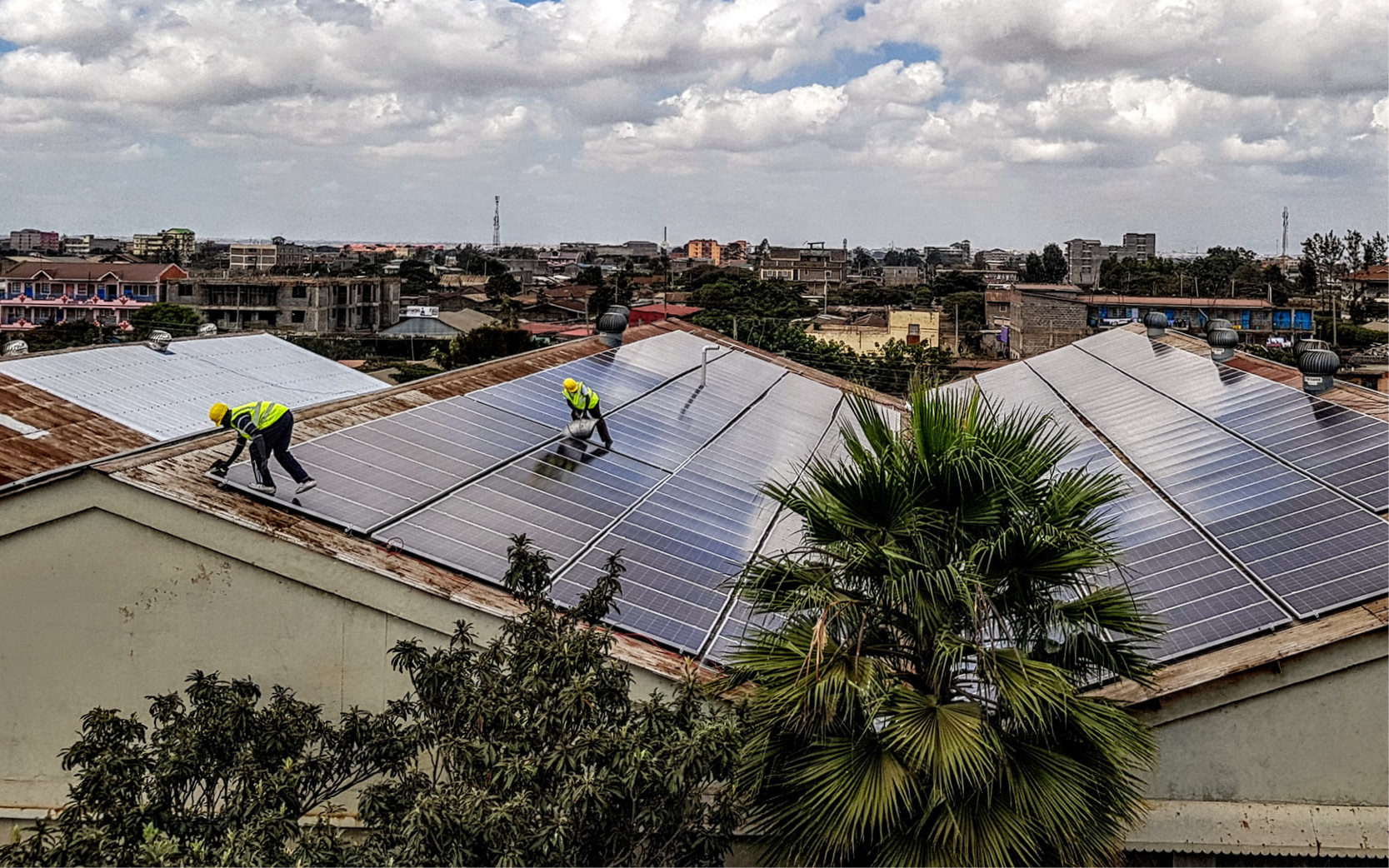
As part of a World Bank study, Fraym analyzed energy demand among Forcibly Displaced People (FDP) and host communities in the Lake Chad Basin region to decipher the least cost technology solutions for reaching full electrification in this fragile geography.
In the Lake Chad Basin region, comprised by Borno, Yobe, and Adamawa states in Nigeria, Diffa region in Niger, Lake Chad region in Chad, and Far North region in Cameroon, more than a decade of violence worsened by rising incidence of climate change events has contributed to an estimated 3 million Forcibly Displaced People (FDP)[1] and about 11.1 million people in need of humanitarian assistance.[2] In an area that already lags the electrification rate of greater Sub-Saharan Africa (38% vs 45%),[3] these displacement waves push rural populations towards areas where access to basic services and electricity may be even more limited like urban settlements and camps. An estimated 76 percent of FDP concentrate in the Nigerian state of Borno, which features the heaviest activity from armed groups in the region.
Few energy access programs in the region target the needs of FDP specifically and those that do focus on short-term emergency needs such as lighting, cooking, and WASH services. To address the energy gap in this vulnerable population, the consortium estimated electricity access and demand, conducted a least-cost electrification analysis considering various technological solutions, and then characterized the off-grid solar market for FDP and their host communities.Based on publicly available household surveys and field data collected by partners in 34 sites across the region, Fraym constructed community level energy demand profiles considering category (households, businesses, and institutions), type (IDP, host, refugee), setting (urban, rural, camp), and sex (male-headed, female-headed). To estimate energy demand for these different profiles, Fraym used data on ownership of electric appliances and energy sources.
Select findings include:
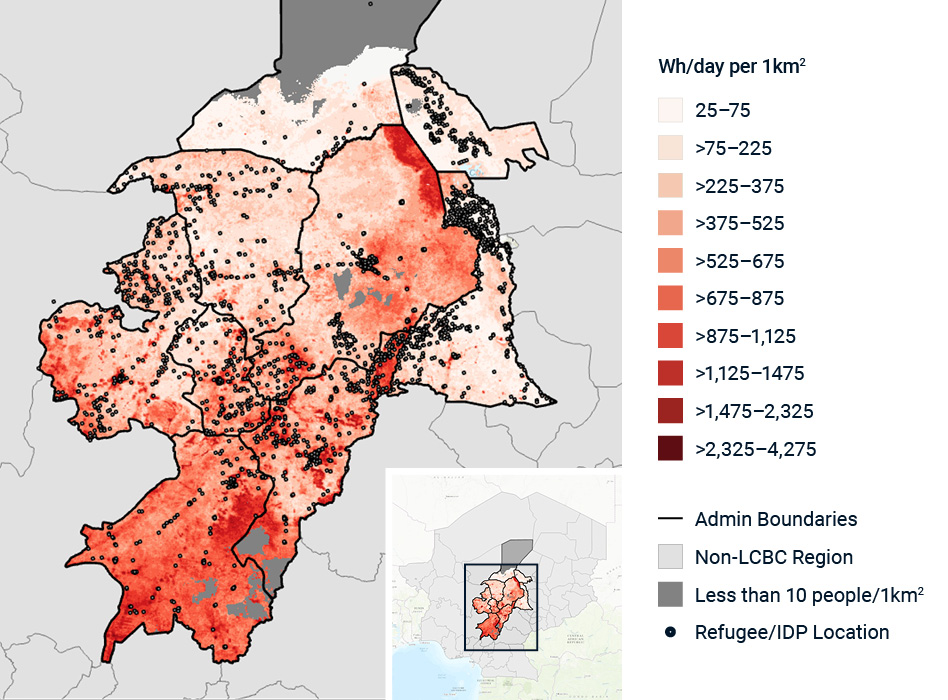
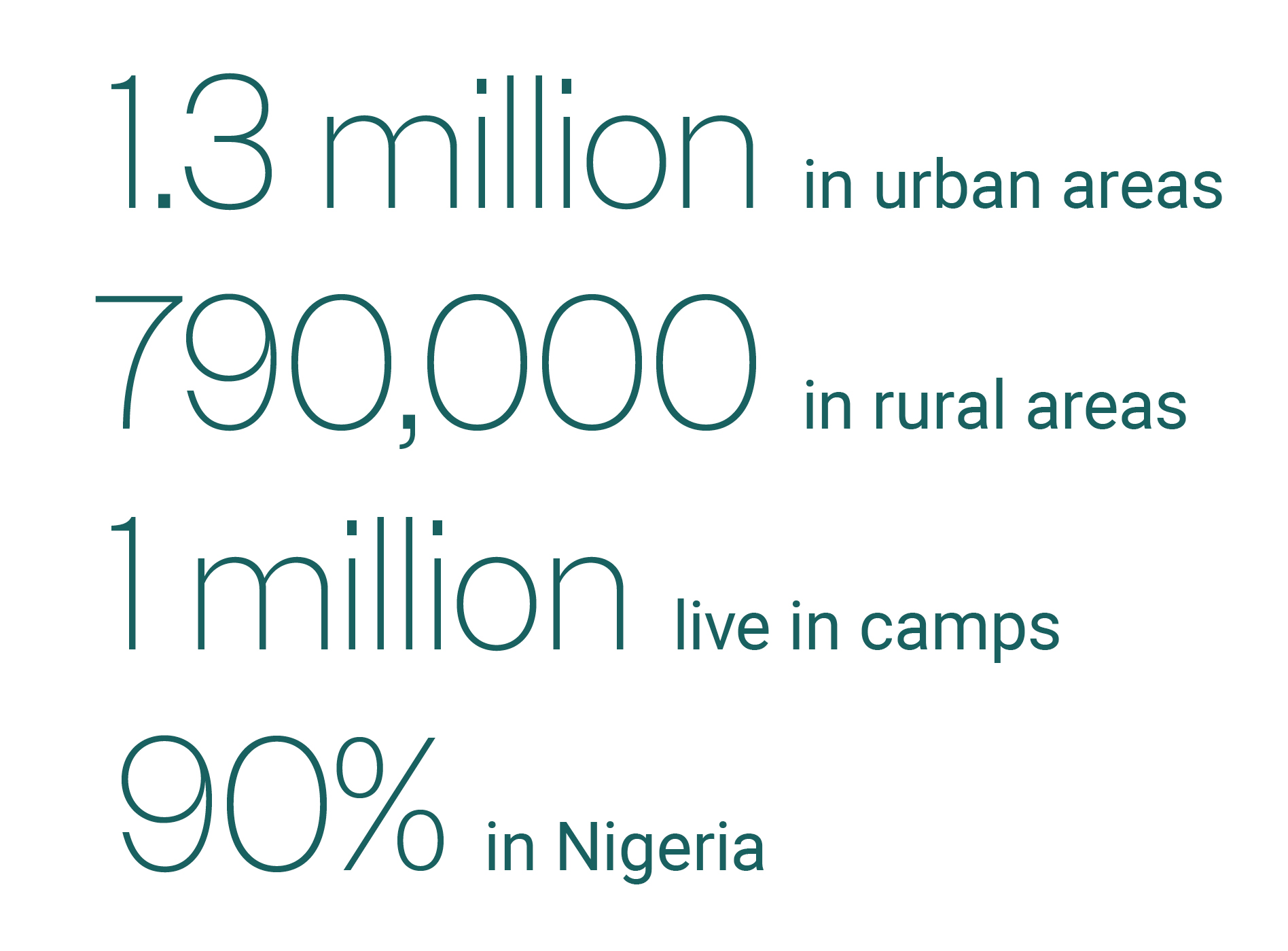
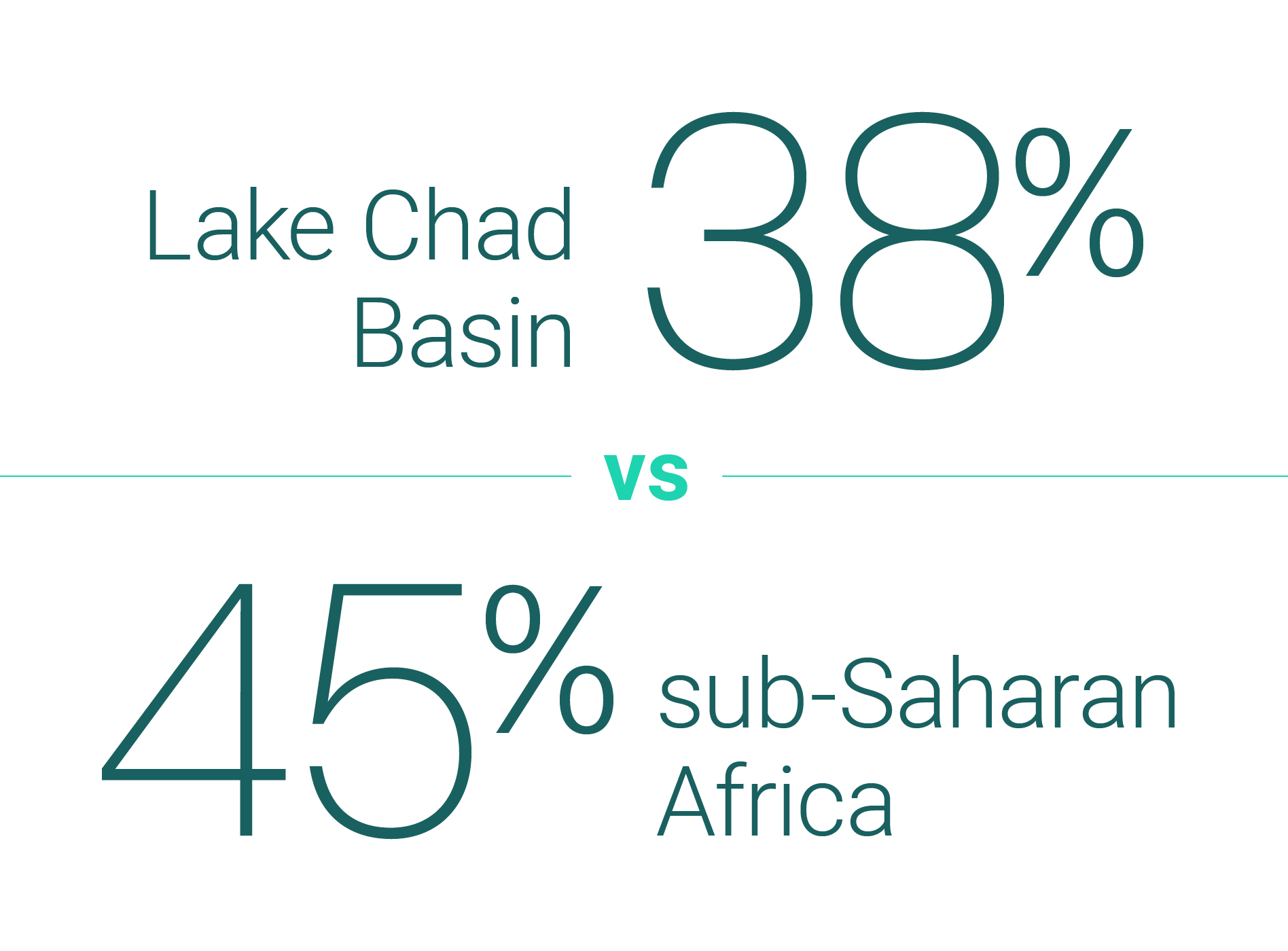
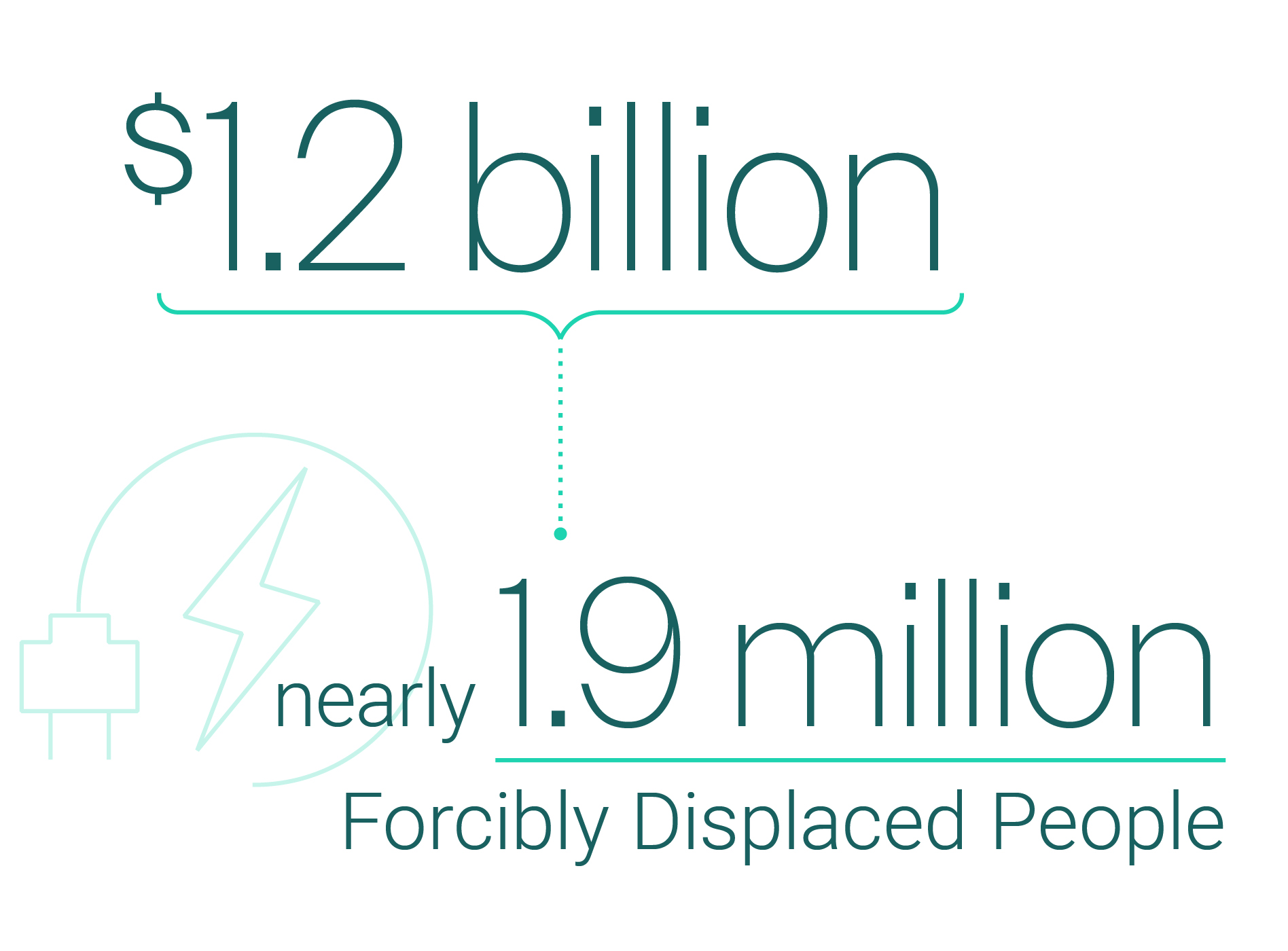
Average host household energy demand across the Lake Chad Basin Region is higher in locations where IDPs and refugees are concentrated
FDP in the Lake Chad Basin are spread across different types of communities.
Electrification in the Lake Chad Basin lags the overall rate in sub-Saharan Africa
We were able to quantify in USD how much investment is required to connect nearly 1.9 million FDP in the region to full access to electricity.
M
forcibly displaced persons
M
people in need of humanitarian assistance
%
electrification rate in the Lake Chad Basin
Using Fraym’s energy demand profiles, the program team identified an investment need of $1.2 billion to provide all FDPs in the region full access to electricity, a delta of nearly 1.9 million end-user connections. To reach this figure, the consortium built a Reference Electrification Model (REM) supplemented by other local data, such as topography and security challenges, and the requirements of different technology solutions. However, while the model identified SAS systems as the least cost technology for communities within camps and grid extension as most appropriate for communities outside of camps, the commercial market remains limited due to existing gaps in affordability across technologies and end users.